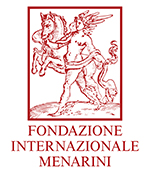
Press release
A Copernican revolution in the treatment of heart disease
The traditional approach must be revised: the blocking of a coronary artery is often not the main cause of heart disease, but just a symptom of an inflammatory process. While revascularisation can solve the problem temporarily it is not able to protect the heart from possible thrombocytes later on, nor can it eliminate the disease. In patients with stable ischaemic heart disease, the addition of angioplasty does not provide significant benefits compared to medical therapy alone. It may be useful to resort to pharmacological treatments instead of revascularisation.
Pisa, 27 June 2014 - The treatment of ischaemic heart disease has made significant progress over recent years. There is far more knowledge about the causes of atherosclerosis and the characteristics of ischaemic heart disease. As a result, coronary revascularisation procedures have increased worldwide and the current approach to the treatment of ischaemic heart disease is prevalently based on the assumption that coronary artery blockages are the main cause of myocardial. However, the experts are reviewing the management of heart disease, as highlighted in the Third International Summit on Ischemic Heart Diseases entitled “The Copernican Revolution in Ischemic Heart Diseases: the day after”, organised in Pisa by the School of Cardiovascular Medicine of the University of Pisa and the Fondazione Internazionale Menarini. "The traditional approach must be revised. Stenosis, that is, the narrowing of the artery due to a cholesterol deposit, is the tip of the iceberg of a widespread disease and most likely only one of the factors that can cause ischaemic heart disease" explains Mario Marzilli, Professor of Cardiovascular Diseases of the University ofPisa and Chairman of the meeting. "We now know that atherosclerosis, considered a disease caused by a cholesterol deposit, is in actual fact an active inflammatory process which is responsible for the development and complications of the arterial lesions. For example, over recent years there has been much focus on the coronary microcirculation that may contribute to the onset of myocardial ischaemia even in the absence of atherosclerosis. Given the above, it is easy to understand that while a revascularisation operation on a blocked coronary artery may solve angina or ischaemia temporarily, it is not able to protect the heart from possible thrombocytes later on, nor can it eliminate the disease, which is not limited to a single coronary artery has a widespread effect on all the arteries and the microcirculation district".
Doubts about the direct relationship between coronary disease and myocardial ischaemia have been confirmed by the fact that the prevalence of ischaemic events even severe, such as instable angina and myocardial infarction is frequent in patients with normal coronary arteries.
The specialists' objective is therefore, that of changing the natural history of the disease and improving its prognosis, with primary and secondary prevention measures and the use of pharmaceutical products with proven preventive effectiveness in high-risk subjects, such as statins, ACE-inhibitors, anti-antagonists, the appropriate resorting to mechanical and pharmacological anti-ischaemic therapies and the use of modern antithrombotic drugs.
"The current therapy for ischaemic heart diseases is based on the concept that coronary stenosis is the underlying factor in all physiopathological problems, giving rise to the chromic forms of ischaemic heart disease when dealing with a stable plaque, or determining acute forms when a plaque is instable", continues Marzilli. "If this was really the case, the removal of the plaque would cure the ischaemic heart disease in a permanent manner, instead there is clinical evidence of a series of inconsistencies that give rise to serious doubts about the concept of stenosis as the main cause of myocardial ischaemia".
The starting point is the changing of the guidelines of the European Society of Cardiology regarding stable angina and the Society's 2010 guidelines on revascularisation. These guidelines address the issue of ischaemic heart disease in a simplistic manner, using revascularisation in case of failure to control the prognosis after pharmacological treatment with drugs such as beta blockers and calcium channel blockers. Vice-versa, numerous studies highlight how in some of the cases, ischaemic heart disease becomes chronic irrespective of the therapeutic solution adopted. One of the most significant is the Courage trial (N Engl J Med 2007; 356:1503-1516 April 12 2007), which clearly demonstrates how 38% of patients in the trial subjected to revascularisation and to optimal medical therapy, have a recurrence of angina.
In the Courage Trial (Clinical Outcomes Utilizing Revascularization and Aggressive Drug Evaluation), 2287 patients with stable ischaemic heart disease were divided into two groups, the first treated with coronary revascularisation via angioplasty associated with medical therapy, and the second, only with medical therapy. "After nearly five years no differences were observed between the two groups in the incidence of total mortality and non-fatal infarction, and consequently in the patients with stable ischaemic heart disease the addition of angioplasty does not provide any significant benefits compared to medical therapy alone", adds Marzilli.
Therefore, where traditional therapy fails to control the disease, instead of turning to revascularisation, it may be more useful to resort to pharmacological treatments, such as ranolazine, an inhibitor of the slow sodium current. This molecule is able to improve the bioelectrical and functional capacities when ischaemia gradually causes heart failure.
The Merlin Timi 36 Trial (JAMA. 2007 Apr 25;297(16):1775-83.), conducted on a cohort of 6,500 acute patients treated with ranolazine, showed a 22% reduction in cases of recurrent ischaemia and a 14% drop in cardiovascular death, infarction and revascularisation.